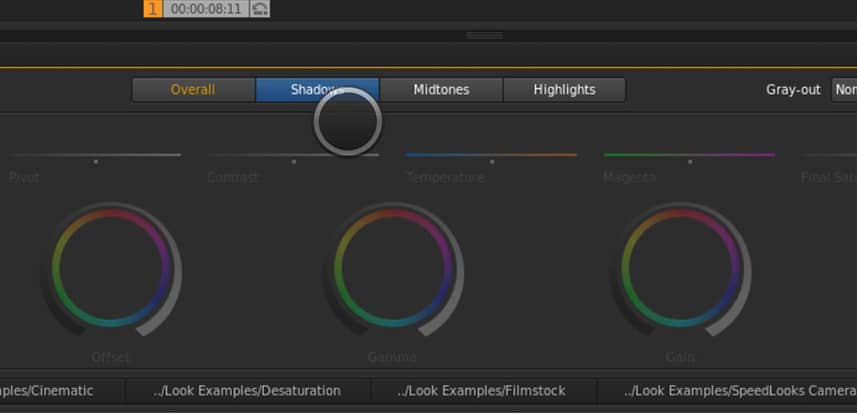Day 17: 20 Insights in 20 Days Holiday Marathon
Localized Contrast in the SpeedGrade Color Wheels
When colorists from other systems first get their hands on SpeedGrade, the first thing they notice is what SpeedGrade doesn’t have… Curves! After all, curves are all about localized contrast… picking specific areas of an image and adding contrast precisely where you want.
3-Way Color Correctors, on the other hand, tend to be about ‘broad strokes’. With significant overlaps between the Shadow / Midtone / Hightlight controls, they can be tough to use when you want to target very narrow ranges of tonal (brightness) values.
SpeedGrade’s Primaries: Not your Mama’s Color Wheels
SpeedGrade’s Color Wheels are a hybrid beast – giving you the control of localized contrast using colorist-friendly color wheels as its interface. This Insight is designed to alter you thinking about (what I call) the 12-Way SpeedGrade Color Wheels. The 12-Way is the centerpiece of SpeedGrade’s Primary Layer. It consists of a Global 3-Way Color Corrector plus three more ‘luma qualified’ 3-Way Color Correctors for a total of 12 independent (but targeted) controls.
Curves? I don’t need no stinkin’ Curves
These independent controls – especially when combined with a supported Tangent Devices control surface – provide extremely nuanced control over your images… typical of the control many colorists like with the Curves interface. The advantage of SpeedGrade’s approach, it’s MUCH more difficult to induce contouring and banding artifacts (which are bad) when making ‘heavy’ adjustments than with a Curves interface.
SpeedGrade Color Wheels in Action
In this video Insight we’ll grade a RED shot in which the client wants to darken an image, maintain details in the deepest blacks, and not lose the ‘vibrance’ of the point-sources of light. This grade can be pulled off in other systems – but not without a bit more work, which is why I think it’s a good example of the nuances grading with the SpeedGrade Color Wheels.
Member Content
Sorry... the rest of this content is for members only. You'll need to login or Join Now to continue (we hope you do!).
Need more information about our memberships? Click to learn more.
Membership optionsMember Login


